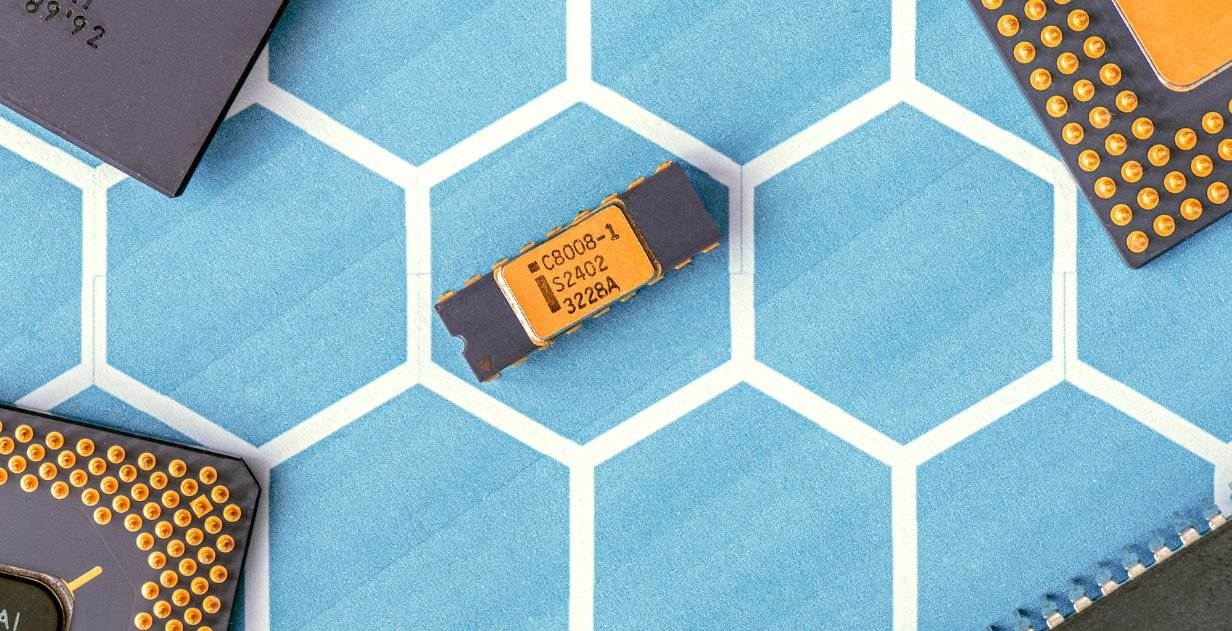What Does GPT Mean?
Have you ever come across the abbreviation GPT and wondered what it stands for? Look no further — we have the answers you seek! GPT stands for “Generative Pre-trained Transformer,” a powerful language processing model used in various fields due to its ability to generate human-like written content.
Key Takeaways:
- GPT stands for Generative Pre-trained Transformer.
- It is a language processing model known for its human-like content generation.
- GPT has wide applications in fields like natural language understanding, machine translation, and chatbot development.
Understanding GPT
**GPT** is an advanced AI model developed by OpenAI. It is based on the Transformer architecture and utilizes deep learning techniques to generate coherent and contextually relevant text. GPT has been trained on vast amounts of data from the internet, allowing it to understand and mimic human language patterns.
With its ability to generate realistic and grammatically correct text, GPT has become a game-changer in various fields. *Researchers* and developers harness its power to create content, improve natural language understanding, facilitate machine translation, and even develop chatbots that can hold engaging conversations with users.
Benefits of GPT
GPT offers several benefits that make it a highly valuable tool:
- **Improved content generation**: GPT can generate high-quality content on a wide range of topics, saving time and effort for content creators.
- **Language understanding**: Its ability to comprehend and process natural language helps enhance language-related tasks, such as sentiment analysis and information retrieval.
- **Translation and localization**: GPT can aid in machine translation and localization efforts, making it easier to bridge language barriers.
- **Chatbot development**: By leveraging GPT’s capabilities, developers can create more intelligent and engaging chatbots that provide personalized responses.
GPT Applications
The applications of GPT are vast and continue to expand as researchers explore its potential:
- Content creation for blogs, articles, and marketing materials.
- Enhancing customer support chatbots with improved conversational abilities.
- Improving language translation services.
- Assisting in medical text analysis.
- Simplifying legal document review.
GPT Model Specifications
If you’re curious about the technical aspects of GPT, here are some key specifications:
| Parameter | Specification |
|---|---|
| Architecture | Transformer-based |
| Training Data | Internet text and other public data sources |
| Input | Text-based prompts |
| Output | Coherent and contextually relevant text |
With its impressive capabilities, GPT has revolutionized the field of natural language processing and continues to make significant contributions to AI-driven applications.
GPT Limitations
While GPT offers immense potential, it does have a few limitations to consider:
- **Lack of explicit reasoning**: GPT may struggle with certain tasks that require explicit reasoning or accurate representation of facts.
- **Subject to biases**: Due to the training data from the internet, GPT can sometimes produce biased or inaccurate information.
- **Prone to abnormalities**: GPT may occasionally generate nonsensical or inappropriate text.
Conclusion
GPT, or Generative Pre-trained Transformer, is a powerful AI language processing model that has revolutionized content generation, language understanding, translation services, and chatbot development. With its ability to generate human-like text, GPT offers exciting possibilities for various industries and continues to evolve.

Common Misconceptions
Misconception 1: GPT stands for General-Purpose Technology
One common misconception people have is that GPT stands for General-Purpose Technology. While it is understandable why this assumption exists given the widespread use of the term “general-purpose technology” in various contexts, GPT, in the specific context of this discussion, actually refers to something different.
- GPT does not stand for General-Purpose Technology.
- GPT is not related to the concept of versatile or multipurpose technologies.
- GPT has a different meaning in the specific context being discussed.
Misconception 2: GPT refers to the Global Public Token
Another common misconception is the belief that GPT stands for the Global Public Token. Although cryptocurrencies and blockchain technology have garnered significant attention in recent years, GPT does not commonly refer to the Global Public Token. It is essential to be cautious and verify the context when encountering acronyms like GPT.
- GPT is not related to cryptocurrencies or blockchain technology.
- GPT does not refer to the Global Public Token.
- Using the term GPT in the context of cryptocurrencies can lead to confusion.
Misconception 3: GPT stands for General Power Transformer
Some may think that GPT refers to General Power Transformer, especially when discussing electrical or power systems. However, this misconception is not accurate in the specific context of our discussion. GPT has a different meaning altogether.
- GPT is not related to electrical or power systems.
- Using GPT to represent General Power Transformer is incorrect.
- General Power Transformer is not the correct interpretation of GPT.
Misconception 4: GPT stands for Global Paintball Tournament
Sports enthusiasts, specifically paintball players, may assume that GPT represents the Global Paintball Tournament. Although paintball tournaments are popular worldwide, GPT does not generally stand for the Global Paintball Tournament. It’s important to recognize that the context and domain may alter the meaning of GPT.
- GPT does not commonly refer to the Global Paintball Tournament.
- GPT is not primarily associated with paintball or related sports events.
- Associating GPT with the Global Paintball Tournament may lead to confusion.
Misconception 5: GPT refers to Google’s PageRank Technology
Some people may mistakenly believe that GPT represents Google’s PageRank Technology, which is the algorithm used by Google to rank web pages in search results. However, in most cases, GPT does not refer to Google’s PageRank Technology. It is necessary to consider the specific domain or context in which GPT is being used.
- GPT is not commonly associated with Google’s PageRank Technology.
- Google’s PageRank Technology is not the primary interpretation of GPT.
- Confusing GPT with Google’s PageRank Technology can lead to misunderstandings.

The History of Artificial Intelligence
Artificial Intelligence (AI) has made significant strides in recent years, particularly with the development of a powerful language processing model called GPT (Generative Pre-trained Transformer). The following tables provide a glimpse into the milestones and impact of AI throughout history.
Timeline of Important AI Milestones
The timeline below showcases key milestones in the development of AI, leading up to the creation of GPT:
| Year | Milestone |
|---|---|
| 1956 | The birth of AI: The Dartmouth Conference |
| 1997 | Deep Blue defeats world chess champion Garry Kasparov |
| 2011 | IBM’s Watson wins Jeopardy! |
| 2012 | Google’s Brain Team develops a neural network capable of recognizing cats |
| 2014 | Facebook introduces DeepFace, a facial recognition system |
Current Applications of AI
AI has permeated numerous industries, shaping the way we interact with technology. Here are some key applications:
| Industry | AI Applications |
|---|---|
| Healthcare | Diagnostic assistance, drug discovery, patient monitoring |
| Finance | Fraud detection, algorithmic trading, customer service chatbots |
| Transportation | Autonomous vehicles, traffic optimization, predictive maintenance |
| Education | Intelligent tutoring systems, personalized learning platforms |
| Retail | Recommendation systems, demand forecasting, inventory management |
Impact of AI on Job Market
The introduction of AI technologies has led to the transformation of various job sectors. Here’s a breakdown:
| Sector | Jobs Affected | Impact |
|---|---|---|
| Manufacturing | Assembly line workers | Automation reduces manual labor, but creates new jobs in AI maintenance |
| Customer Service | Call center operators | Automated chatbots handle basic queries, allowing human agents to focus on complex issues |
| Transportation | Truck drivers | Autonomous vehicles may replace some driving jobs, necessitating a shift in skills |
| Finance | Accountants and bookkeepers | Automation streamlines manual accounting tasks, requiring accountants to become data analysts |
| Healthcare | Radiologists | AI can assist in image analysis, allowing radiologists to focus on complex cases |
Challenges and Ethical Considerations
AI technologies like GPT raise important ethical concerns and challenges:
| Challenge | Description |
|---|---|
| Privacy | AI systems can collect extensive personal data, necessitating robust privacy measures |
| Bias | Developers must ensure algorithms are free from biases related to gender, race, or other factors |
| Job Displacement | The shift towards automation may result in job losses for certain professions |
| Accountability | Establishing clear responsibility and accountability for AI decisions poses a significant challenge |
| Security | AI can be vulnerable to attacks and exploitation, necessitating robust security measures |
The Future of AI and GPT
As AI continues to evolve, the future holds great promise. Here are some potential developments:
| Area | Potential Development |
|---|---|
| Healthcare | AI-powered virtual assistants aiding doctors in diagnosis and treatment planning |
| Education | Intelligent tutoring systems that adapt to individual students’ learning styles and needs |
| Robotics | Advanced humanoid robots capable of complex tasks and human-like interaction |
| Entertainment | AI-generated virtual actors and characters in movies and video games |
| Space Exploration | AI assisting in analyzing vast amounts of data collected from space missions |
With GPT and AI at the forefront of technological advancements, we can expect these fields to shape our future in unimaginable ways. The potential for breakthroughs in various sectors is limitless as long as we navigate the associated challenges and ethical considerations responsibly.




